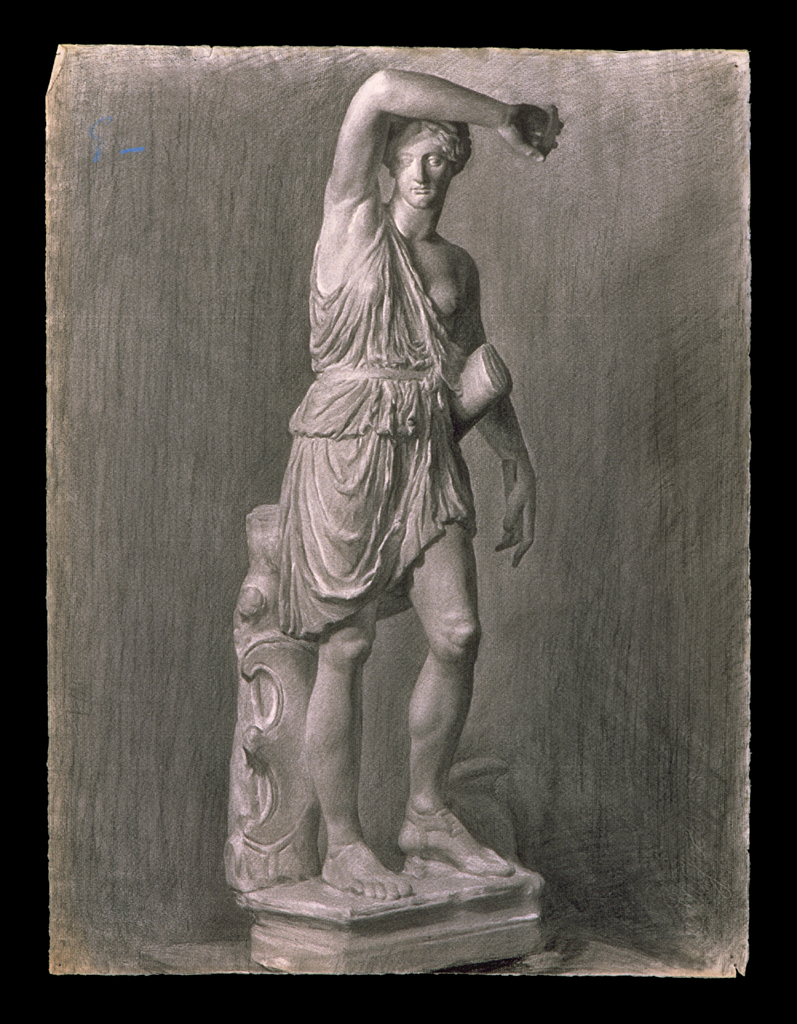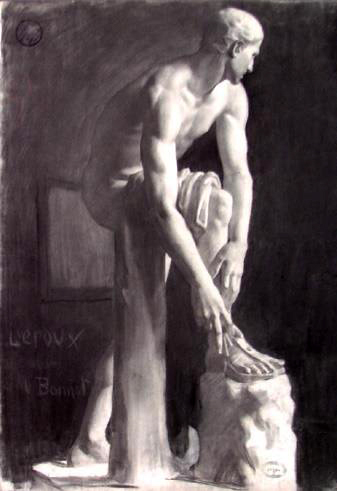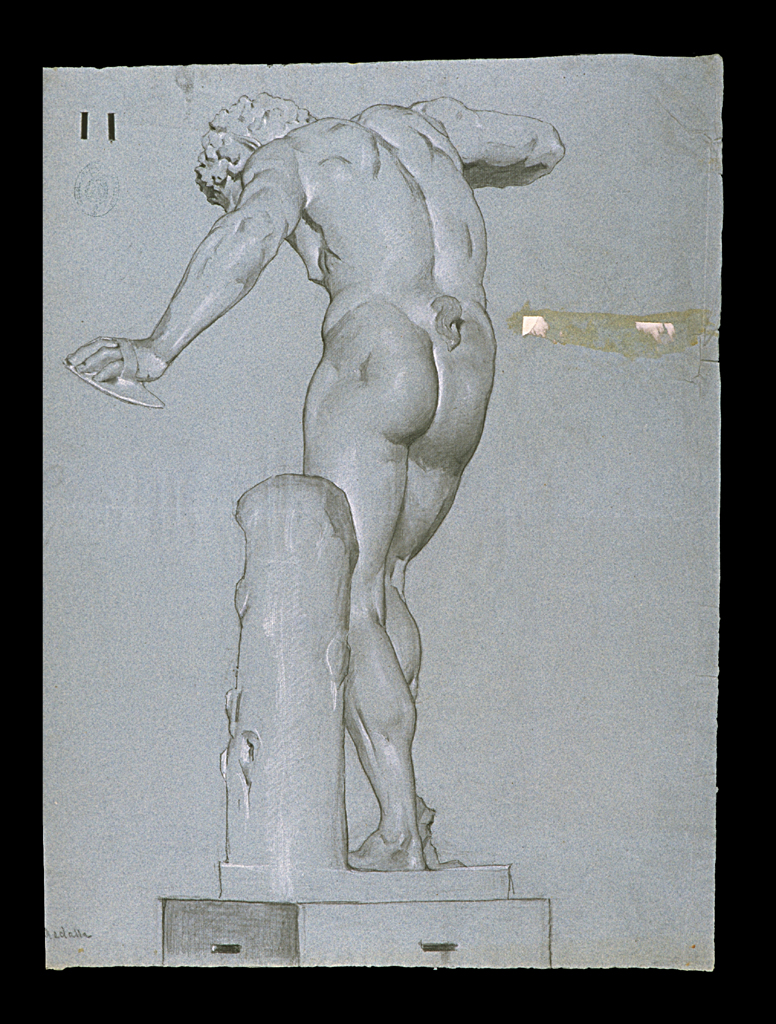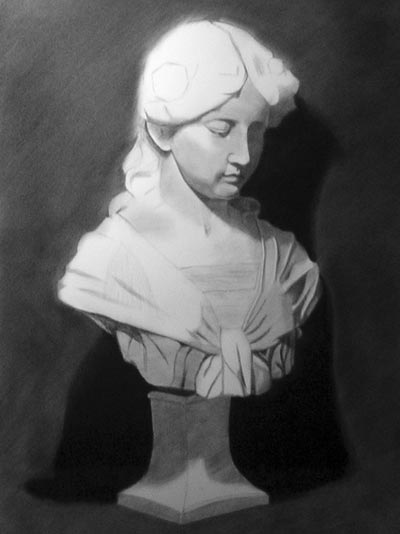Cast Drawing is an excellent exercise for painting realistically. It teaches you to see form in three dimensions and transfer it to a two dimensional surface – the drawing paper. Cast Drawing is the following step in learning classical art after having practised the Bargue Drawings. Below is a collection of the most valuable resources in the internet on Cast Drawing. So make sure to read the whole article plus all linked sources.
The materials you’ll need
Cast Drawings are usually done in charcoal for it allows a broader spectrum of light and shade than pencil does. The deep blacks achieved with charcoal is not achieved with a pencil which in the end leaves a silvery shine in the darks. Classical art academies rely on the high quality of NITRAM Charcoal.
- Hardness h/hb/b/b+
- 4 pairs of sticks
- Nitram has been working on site for more than 50 years with certified willow wood from Canadian forests
* Last update on 2024-07-27 / Affiliate links / Images from Amazon Product Advertising API
NITRAM also sells a sharpening block but you can make your own with much less money. Sharpening a charcoal stick for Cast Drawing is a science in its own. Remember to collect the charcoal dust for later use on your drawing! Apply the charcoal dust with a brush if needed.
You will also need a kneaded eraser for being able to erase spots of different sizes. A kneaded eraser can be sharpened to a fine point to lift off just little amounts of charcoal as well be used for larger areas to be erased.
Usually the white of the paper is left for the highlights in the drawing but some use white chalk and the like to highen up those spots. Arches Watercolor Hot Pressed Paper is recommended by many artists for drawing with pencil and charcoal as it absorbs enough graphite or charcoal to achieve a wide range of tonal values. It is fine enough to draw small details and is sufficiently resistant to erasing.
- Paper Made with Natural Cotton fibers on a cylinder-mold machine
- Great for watercolor, gouache, Acrylic, and airbrushing
- Made with a Natural gelatin sizing
- 20 sheets of Natural white, acid free, 100Percent Cotton paper
- 14x20hot press 140lb/300G
* Last update on 2024-07-27 / Affiliate links / Images from Amazon Product Advertising API
Your drawing is – as the name Cast Drawing says – a white plaster cast. These most often are anatomical plaster casts. Plaster is white so there is no color distracting the student. Therefore, he is able to see the form better while looking at a monochrome reference. You can also make your own plaster casts for little money. And it’s fun too! Click here to find some instructions on making plaster casts with alginate or with plaster bandages.

The setup
You do not need to have an artists studio with perfect conditions, north facing windows and the like for making a Cast Drawing. A room in which the light fluctuates due to natural light irradiation from outside is more likely to hinder cast drawing. See here how you can set up your drawing place even in a closet.
Or you have an easel which can be positioned perfectly vertical. Place a wood board wide enough to have the paper on one side and the plaster cast on the other side. There are plaster casts which can be hung up with a nail and some – like busts – which need to have a stand or a shelf.
You also need a spot light source to light your plaster cast and paper. Regular gooseneck desk lamps are sufficient for this application. Here you can find light bulbs with a daylight spectrum (which is not a must have for Cast Drawing but for matching colors in painting it is absolutely essential).
Execution of a Cast Drawing
If you have practised some Bargue Drawings before you are familiar with the process of copying a reference to the drawing paper (either in the Sight-Size method or through Comparative Measurement). In general the process of a Cast Drawing is separated into two steps: First you transfer the measurements by making a line drawing of the subject’s features (see this 1:23 hour video). Then you work out the dimensionality by controlling the values of light and dark. The values are what make an image look realistic.

The value of values
A sphere is a simple example of the effect of light and shadow. All values from light to dark represent the dimensionality of the object. You can try to practise soft transitions from light to dark by drawing a rectangle on a drawing paper. Now draw the gradient just as in the image to the left.
When doing a Cast Drawing take your time and step back often. Looking at the object and the drawing from a distance is essential to spot errors. So do this as much as possible. You can stick tape on the floor to mark your viewing position. It must be at least far enough to not turn your head for the visual comparison through eye balling.

Below you can see the process broken up into 3 steps:
The size of this drawing is about 50 x 70 cm (20 x 28 in) and it took over 40 hours to complete. And even if you think you are finished there are still areas to work on. Because we lose the view on errors after looking at an object for a longer period of time it is necessary to leave the drawing alone for a while and return with a fresh eye.
In this video German based artist Michael Milosevic talks about the inner process one is going through while making a Cast Drawing. He also talks about how the Angel Academy teaches drawing in a high standard to get a very refined drawing. A Cast Drawing does not need to have such a perfect refinement to be effective. Learning how light creates the form through values can be accomplished also by rougher executions (see the gallery of Old Master drawings below). But such a fine execution is just simply beautiful to look at!
Eye candy: Old master drawings from the academies
I have collected some Cast Drawings for you, for which there is no copyright anymore. I would like to make these drawings available to you as inspiration. Some of them show the same plaster cast, but from different angles. Probably the drawing students were in the same course but painted the object from different positions.



















































Thank you, I’ve been looking for something like this for years.